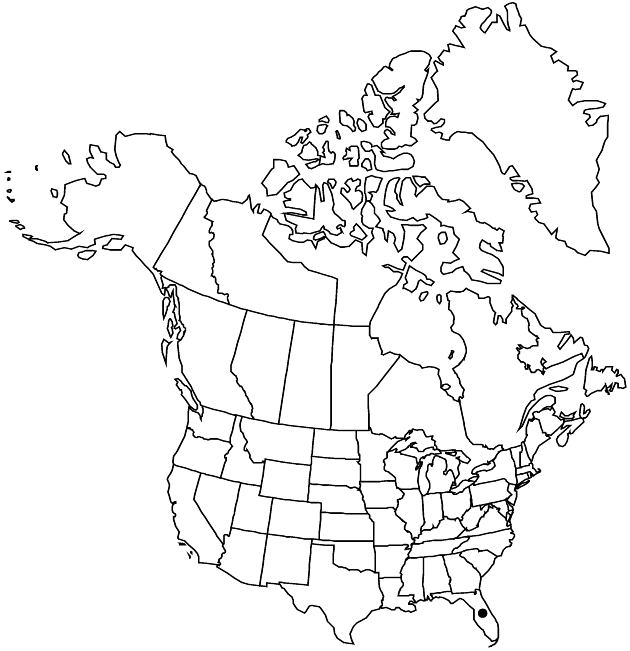Difference between revisions of "Chaptalia albicans"
Index Kew 1: 506. 1893.
FNA>Volume Importer |
imported>Volume Importer |
||
| (One intermediate revision by the same user not shown) | |||
| Line 57: | Line 57: | ||
|publication year=1893 | |publication year=1893 | ||
|special status= | |special status= | ||
| − | |source xml=https:// | + | |source xml=https://bitbucket.org/aafc-mbb/fna-data-curation/src/2e0870ddd59836b60bcf96646a41e87ea5a5943a/coarse_grained_fna_xml/V19-20-21/V19_20.xml |
|tribe=Asteraceae tribe Mutisieae | |tribe=Asteraceae tribe Mutisieae | ||
|genus=Chaptalia | |genus=Chaptalia | ||
Latest revision as of 19:50, 5 November 2020
Leaves sessile or nearly so; blades obovate to obovate-elliptic, 2–14 cm, margins retrorsely serrulate to denticulate-apiculate, abaxial faces white-tomentose, adaxial faces green, glabrous or glabrate. Heads erect in bud, flowering, and fruit. Peduncles ebracteate, 6–15 cm in flowering, 12–37 cm in fruit, dilated distally. Florets: outer pistillate, corollas creamy white, rarely purple tinged, laminae 0.2–0.3 mm wide; inner florets bisexual, fertile. Cypselae 8.4–11.2 mm, beaks filiform, lengths 0.5–0.6+ times bodies, faces glabrous or sparsely glandular (usually only along the nerves). 2n = 24, ca. 29.
Phenology: Flowering (Mar–)Apr–Jul(–Nov).
Habitat: Grassy areas or open savannas, sometimes near evergreen oaks
Elevation: 0–50 m
Distribution

Fla., Mexico, West Indies, Central America.
Discussion
Chaptalia albicans was treated by A. Cronquist (1980) as C. dentata (Linnaeus) Cassini. The latter is known only from the West Indies (G. Nesom 1984) and contrasts with C. albicans in having outer pistillate florets with corollas white to greenish (versus white) and laminae (0.2–)0.4–0.7 mm (versus 0.2–0.3 mm) wide, style branches of pistillate florets (0.5–)0.7–0.9 mm (versus 0.8–1.3 mm), cypselae 5.5–7.5(–8.5) mm (versus 8.4–11.2 mm), orange (versus white) carpopodia, and pappus bristles 5.8–8.5 mm (versus 7.8–10.5 mm).
Selected References
None.